Author Notes: This is not the confit they teach in cooking school, or the kind served at restaurants. It’s the kind you can make any time — all you need are a few good duck legs, a skillet and some very basic spices. And it’s just as good.
Melissa Clark’s method is very simple, and the best perk is you don’t need to come up with a vat of duck fat before you get going — you just render some out from the cured duck legs themselves.
Note: This recipe is easily halved. Adapted very slightly from In the Kitchen with a Good Appetite by Melissa Clark. —Genius Recipes
Serves: 6-8
Ingredients
-
1 1/2 teaspoons kosher salt
-
1 teaspoon freshly ground black pepper
-
1/2 teaspoon dried thyme
-
1 bay leaf, crumbled
-
8 moulard duck legs (about 4 pounds total), rinsed and patted dry but not trimmed
Directions
- In a small bowl, combine salt, pepper, thyme and bay leaf pieces. Sprinkle duck generously with mixture. Place duck legs in a pan in one layer. Cover tightly with plastic wrap and refrigerate for 24 hours. Note: Moulard duck legs can vary in size — if yours are closer to 1 lb. each, instead of 1/2 lb., add an extra 6-12 hours to the curing time if possible, and increase the spice mix proportionally by weight.
- The next day, heat oven to 325 degrees. Place duck legs, fat side down, in a large ovenproof skillet, with legs fitting snugly in a single layer (you may have to use two skillets or cook them in batches). Heat duck legs over medium heat until fat starts to render. When there is about 1/4 inch of rendered fat in pan, about 20 minutes, flip duck legs, cover pan with foil, and place it in oven. If you have used two pans, transfer duck and fat to a roasting pan, cover with foil and place in oven.
- Roast legs for 2 hours, then remove foil and continue roasting until duck is golden brown, about 1 hour more. Remove duck from fat; reserve fat for other uses.
- Serve duck hot or warm, over roasted potatoes or noodles or bitter salad greens.

1 of 15
Photo by James Ransom
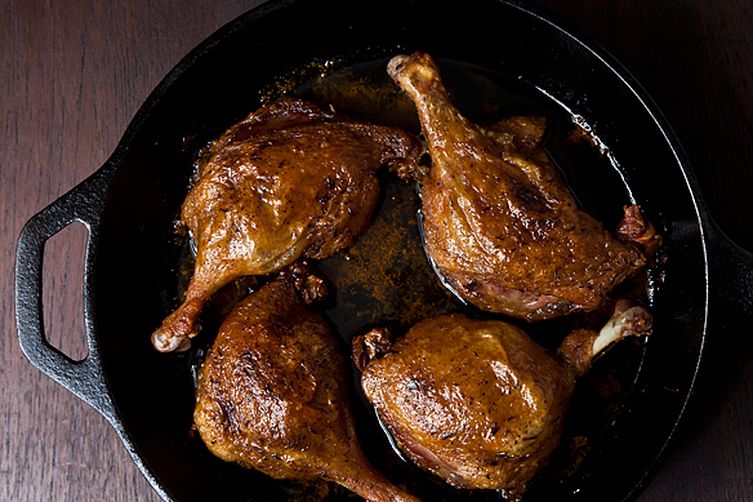
2 of 15
Photo by James Ransom

First up, assemble the cure: it's mostly scooping, but you do have to crumble a bay leaf.
3 of 15
Photo by Food52

Dried thyme, bay leaf speckles, kosher salt, pepper. This is a good baseline spice mix, but next time you can experiment with other flavors, like star anise or coriander.
4 of 15
Photo by Food52
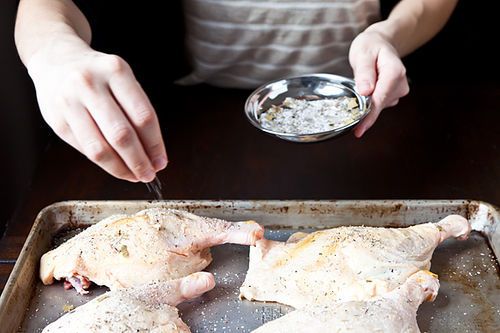
Sprinkle the spices lightly and evenly.
5 of 15
Photo by Food52

Both sides please.
6 of 15
Photo by Food52
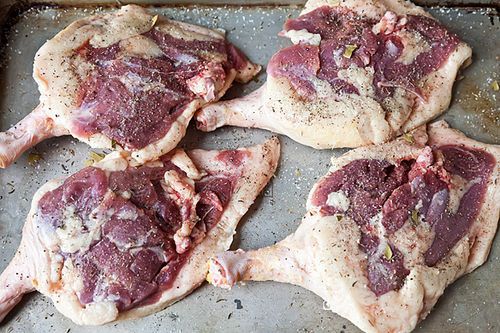
It might not look like enough salt, but it is. This way, you won't have to rinse the excess off tomorrow.
7 of 15
Photo by Food52

Now cover it up and pack it away in the fridge for a day (longer if your legs are huge).
8 of 15
Photo by Food52

The next day, it will look like this — pretty much the same, but the salt will have absorbed in.
9 of 15
Photo by Food52
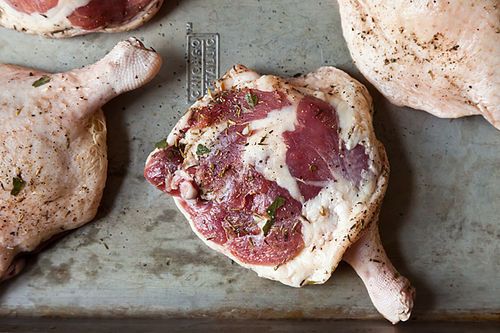
See?
10 of 15
Photo by Food52
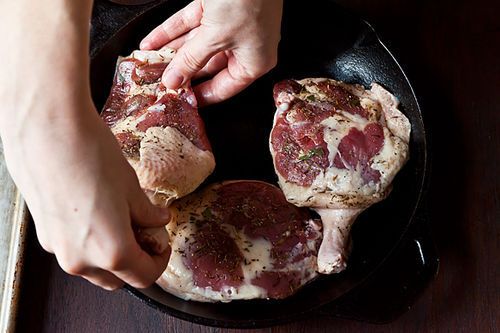
Now tuck them all into a heavy, oven-safe skillet or two. They should fit snugly and pinwheel around each other, but the skin side should lay flat for a good sear.
11 of 15
Photo by Food52
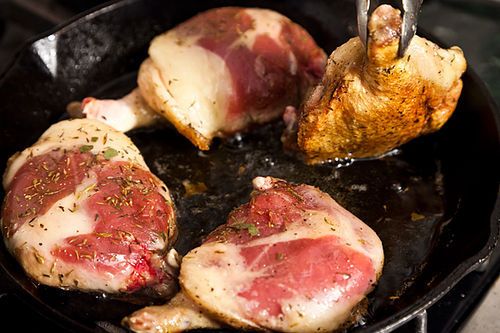
If you want to peek obsessively, we won't judge. It shouldn't stick too much either, with all that fat.
12 of 15
Photo by Food52
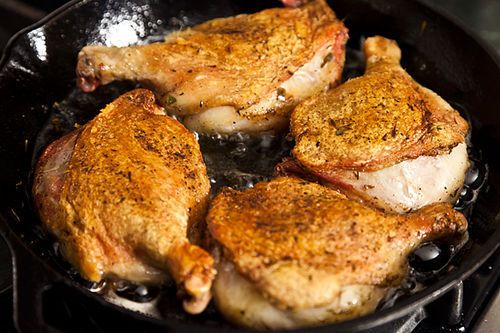
Get them browned till you have 1/4 inch of fat rendered in the pan, but be sure you don't burn or dry them out at this stage. They'll need a good layer of fat left on top for the next few…
13 of 15
Photo by Food52

Now seal them up, protecting your hands with a potholder — that pan's hot! Into the oven.
14 of 15
Photo by Food52
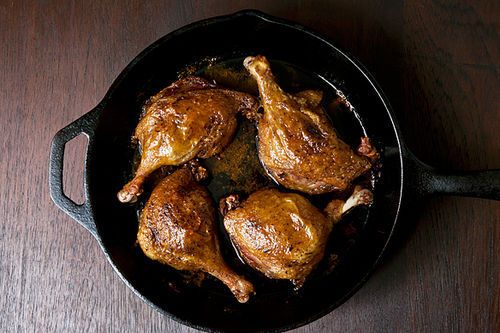
A few hours later, there you have it: really easy duck confit.
15 of 15
Photo by Food52
